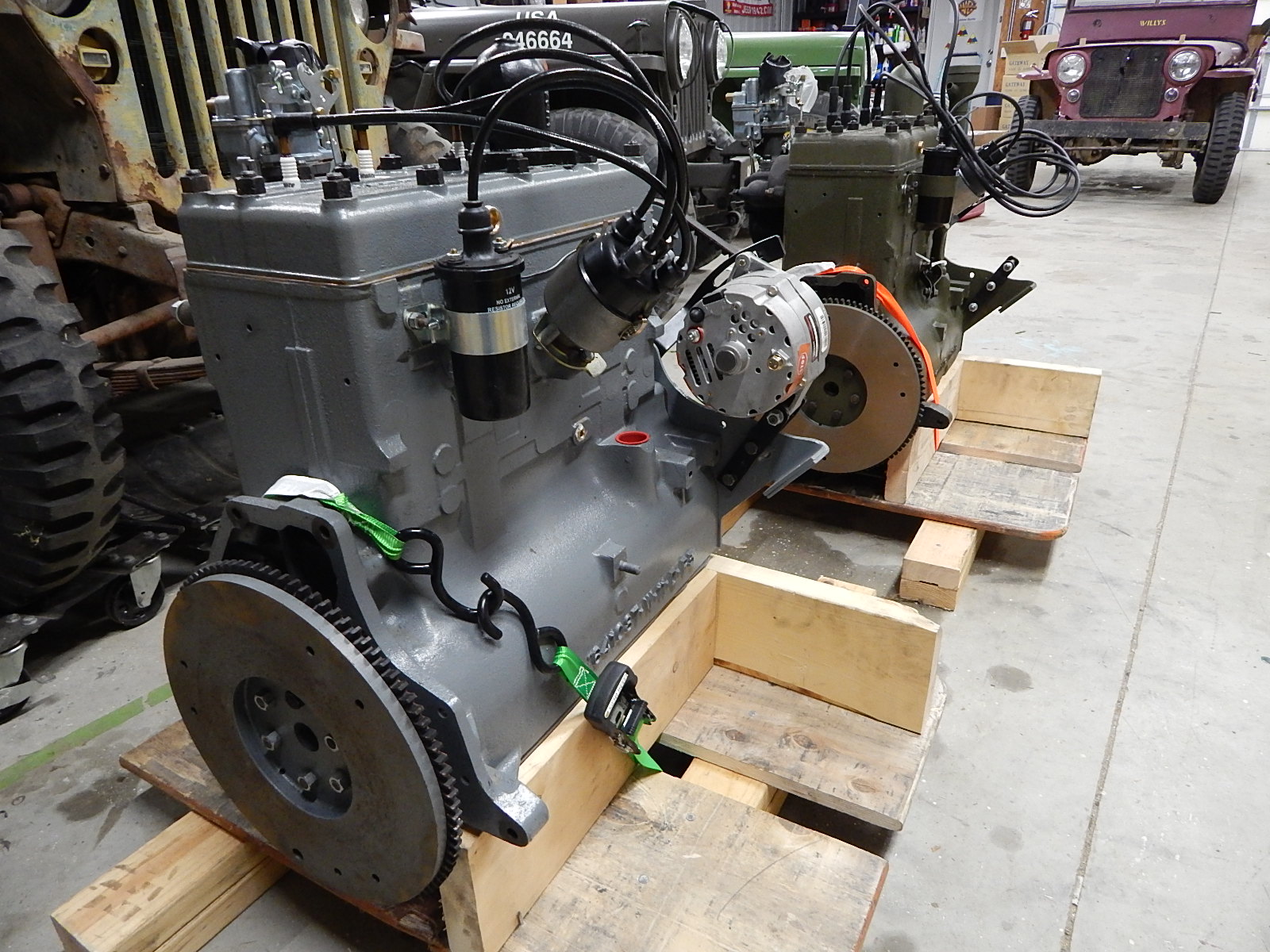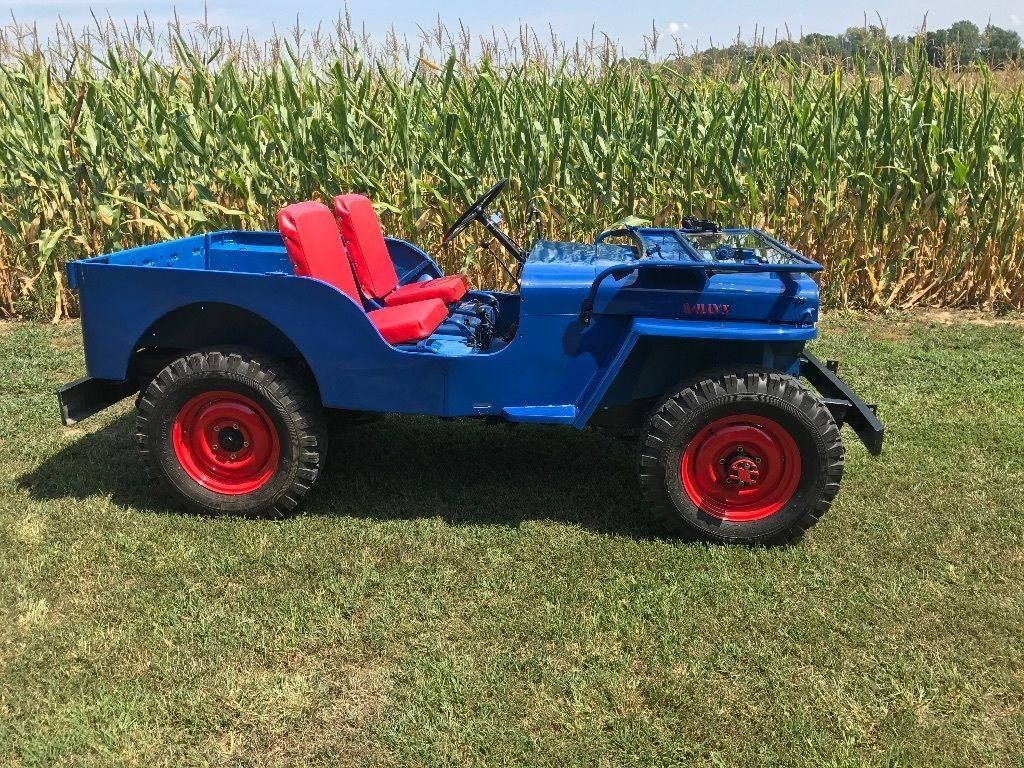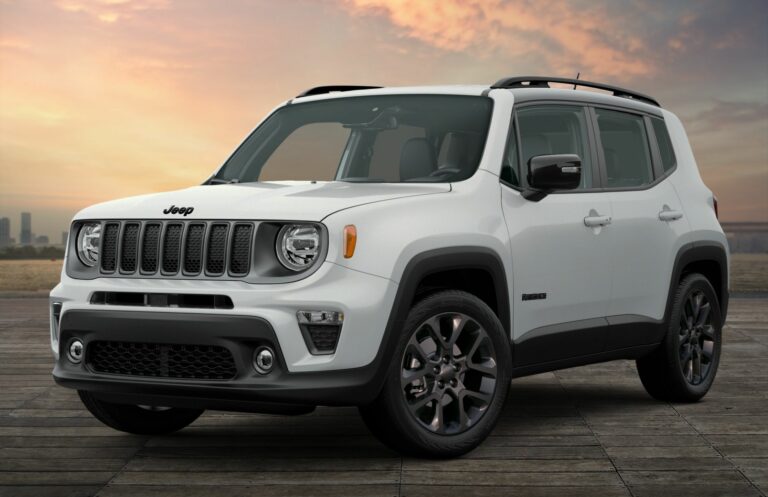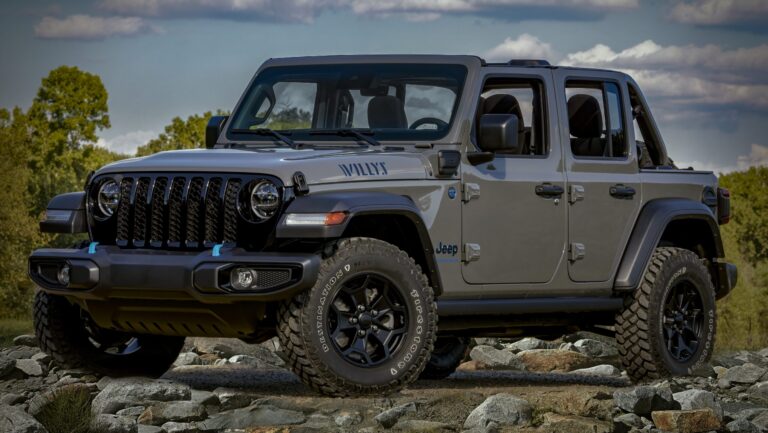1946 Willys Jeep For Sale: A Comprehensive Buyer’s Guide
1946 Willys Jeep For Sale: A Comprehensive Buyer’s Guide jeeps.truckstrend.com
Introduction: Unearthing a Post-War Icon
The year 1946 marked a pivotal moment in automotive history. World War II had just concluded, and the iconic "Jeep" that had served valiantly on battlefields around the globe was transitioning from a military workhorse to a civilian utility vehicle. Among the earliest and most recognizable of these post-war civilian models was the Willys CJ-2A, often simply referred to as the "1946 Willys Jeep." More than just a vehicle, it represents an era of resilience, innovation, and practical design, making a 1946 Willys Jeep for sale a highly sought-after commodity for collectors, enthusiasts, and those seeking a tangible piece of American history.
1946 Willys Jeep For Sale: A Comprehensive Buyer’s Guide
The allure of the 1946 Willys Jeep lies in its rugged simplicity, unmistakable profile, and incredible versatility. It was designed from the ground up to be a multi-purpose tool for farmers, construction workers, and adventurous individuals, pioneering the concept of the civilian SUV. Today, finding one for sale offers a unique opportunity to own a piece of this legacy – whether as a meticulous restoration project, a weekend trail machine, or a conversation-starting showpiece. This comprehensive guide will navigate the nuances of acquiring a 1946 Willys Jeep, providing essential insights for a successful and informed purchase.
The Enduring Legacy: Why a 1946 Willys Jeep?
The Willys CJ-2A, produced from 1945 to 1949, was Willys-Overland’s first mass-produced civilian Jeep. Building on the success of its military predecessor, the MB, the CJ-2A incorporated several key changes to make it more suitable for civilian life. These included a tailgate, larger headlights, a passenger-side windshield wiper, and a more robust T-90 transmission.
At its heart lay the venerable "Go-Devil" L-head four-cylinder engine, known for its reliability and torque, paired with a Spicer 18 transfer case for robust four-wheel drive capability. Its spartan interior, flat fenders, and exposed hinges defined a utilitarian aesthetic that has become timeless. Owning a 1946 Willys Jeep is about more than just owning a classic car; it’s about connecting with a piece of Americana that helped rebuild a nation and define a new era of personal mobility. Its historical significance, combined with its surprising off-road prowess and simple mechanics, makes it an enduring icon that continues to captivate enthusiasts worldwide.
What to Look For: Key Considerations When Buying
When embarking on the search for a 1946 Willys Jeep for sale, a thorough inspection and understanding of common pitfalls are paramount. These vehicles are over 75 years old, and their condition can vary wildly.
- Rust and Body Integrity: This is often the biggest concern. Check the frame rails meticulously for rust, cracks, or amateur repairs. Pay close attention to the body tub, particularly the floorboards, hat channels (the structural supports underneath the floor), and the areas around the rear wheel wells and tailgate. Fenders, grille, and windshield frame should also be inspected for severe corrosion or bondo.
- Mechanical Condition:
- Engine ("Go-Devil" L-134): Listen for knocking, excessive smoke (blue indicates oil burning, black indicates rich fuel mix), and unusual noises. Check for oil leaks around the pan, rear main seal, and valve cover. A compression test can reveal engine health.
- Transmission (T-90): Test all gears, listening for grinding, especially when shifting into reverse or second. Check for fluid leaks.
- Transfer Case (Spicer 18): Ensure 2WD, 4-High, and 4-Low engage smoothly. Check for leaks.
- Axles (Dana 25 front, Dana 27/41 rear): Look for leaks around the differential covers and wheel hubs. Listen for humming or clunking during a test drive.
- Steering & Suspension: Check for excessive play in the steering wheel, which could indicate worn steering box, tie rod ends, or drag link. Inspect leaf springs for breaks or sagging, and shock absorbers for leaks.

- Originality vs. Modifications: Determine if originality is important to you. Many Jeeps have had engine swaps (e.g., Ford 289, Chevy 350) or modifications like lift kits, larger tires, or modern electrical systems. While some modifications can enhance usability, they typically reduce collector value. Check for original data plates and frame numbers to verify authenticity.
- Documentation: A clear title is essential. Any service records, previous ownership history, or restoration receipts add significant value and provide insight into the vehicle’s past.
- Purpose: Consider your intended use. A fully restored showpiece will command a premium, while a "driver" might have some flaws but is ready for light use. A "project" will require significant time, money, and expertise.


Navigating the Market: Where to Find a 1946 Willys Jeep for Sale
The market for vintage Willys Jeeps is robust, but finding the right one requires patience and knowing where to look.
- Online Marketplaces:
- eBay Motors & Craigslist: Offer a wide range of conditions and prices, but require careful vetting of sellers and vehicles. Be wary of scams and always insist on detailed photos and communication.
- Facebook Marketplace & Dedicated Groups: Many classic car and Jeep-specific groups exist on Facebook. These can be excellent sources for finding vehicles, as sellers are often enthusiasts themselves.
- Specialized Classic Car Websites:
- Hemmings Motor News: A long-standing resource for classic cars, often featuring higher-quality listings.
- Bring a Trailer (BaT): Features curated auctions for collector vehicles. While higher-end, occasionally a well-restored CJ-2A will appear.
- ClassicCars.com / AutoTrader Classics: Aggregators of classic car listings from dealers and private sellers.
- Willys-Specific Forums & Clubs: Online forums like "The CJ-2A Page" forum (cj2a.com) or local Willys clubs are invaluable resources. Members often sell vehicles within the community, and you can gain expert advice.
- Auctions: While less common for unrestored CJ-2As, major classic car auctions like Mecum or Barrett-Jackson occasionally feature highly restored examples. Local estate or farm auctions can sometimes yield unexpected finds, often at lower prices, but usually in "as-is" condition.
- Word-of-Mouth: Let friends, family, and local mechanics know you’re looking. Many classic vehicles are sold informally.
The Buying Process: Tips for a Successful Purchase
- Do Your Homework: Research the specific quirks and common issues of the 1946 CJ-2A. Understand what a fair price is for different conditions.
- Set a Realistic Budget: Factor in not just the purchase price, but also transportation costs, registration, insurance, and crucially, potential repair or restoration expenses. Even a "running" Jeep will likely need immediate attention.
- Insist on a Pre-Purchase Inspection (PPI): If you’re not an expert, hire a qualified mechanic specializing in vintage vehicles to inspect the Jeep. This is especially vital for long-distance purchases. They can identify hidden problems that might cost thousands to repair.
- Test Drive Thoroughly: If possible, drive the vehicle yourself. Pay attention to steering response, brake feel, engine performance under load, and transmission shifting. Test the 4WD system on a suitable surface if allowed. Listen for any unusual noises.
- Negotiate Wisely: Be prepared to negotiate based on the vehicle’s condition, originality, and any identified flaws. Having a PPI report can be a strong negotiating tool.
- Secure Your Purchase: Use secure payment methods. For long-distance transactions, consider an escrow service. Ensure all paperwork, including the title, bill of sale, and any historical documentation, is properly transferred and legally binding.
Owning a Legend: What to Expect Post-Purchase
Congratulations! You’ve acquired a piece of history. But ownership of a 1946 Willys Jeep is a unique experience.
- Maintenance & Parts: While mechanically simple, these vehicles require consistent attention. Parts for the "Go-Devil" engine and drivetrain are generally available through specialized vintage Jeep parts suppliers (e.g., Kaiser Willys, Walck’s 4WD). You’ll need to be comfortable with basic mechanics or have a trusted mechanic who understands vintage vehicles.
- Driving Experience: Do not expect modern comforts. There’s no power steering, no power brakes, no air conditioning, and little sound insulation. It’s slow, loud, and the ride can be bumpy. Driving a CJ-2A is an engaging, tactile experience that demands your full attention.
- Restoration Potential: Many 1946 Willys Jeeps for sale are projects. A full, body-off restoration can be a multi-year, multi-thousand-dollar endeavor, but it’s also incredibly rewarding.
- Community: The Willys Jeep community is incredibly supportive. Join online forums, local clubs, and attend events. You’ll find a wealth of knowledge, camaraderie, and assistance.
Price Table: 1946 Willys Jeep For Sale Estimated Values (USD)
Prices for a 1946 Willys Jeep CJ-2A vary significantly based on condition, originality, and market demand. The table below provides a general range.
| Condition Category | Estimated Price Range (USD) | Key Characteristics |
|---|---|---|
| Project/Parts Vehicle | $2,000 – $7,000 | Non-running, significant rust, incomplete, missing major components, seized engine/transmission. Suitable for full restoration or parts donor. Will require extensive work and investment. |
| Running, Needs Work | $7,000 – $15,000 | Runs and drives but has significant mechanical issues, moderate to severe rust, electrical problems, worn suspension, or a tired engine. Usable as-is for light duty but requires immediate and ongoing repairs to be reliable or safe. Paint is often faded or peeling. |
| Good Driver Quality | $15,000 – $25,000 | Runs and drives reliably, minimal to moderate rust (often surface rust or small patches), all systems generally functional. May have older repaint, non-original components, or minor cosmetic flaws. Suitable for regular weekend driving, light off-roading, and local shows. |
| Excellent Driver/Lightly Restored | $25,000 – $40,000 | Mechanically sound, largely rust-free, good quality repaint, well-maintained interior. May have some period-correct non-original parts. Suitable for frequent driving, shows, and reliable use. Often has received significant mechanical attention or a basic restoration. |
| Concours/Show Quality (Full Restoration) | $40,000 – $70,000+ | Meticulously restored to original specifications (or better), show-winning condition. Flawless paint, body, and chassis. All mechanicals rebuilt or new. Often has original "Go-Devil" engine, correct accessories, and period-correct details. Suitable for display and light driving to maintain condition. Top-tier examples can exceed $70,000. |
Note: These are estimates and actual prices can vary based on location, seller, specific vehicle history, and market fluctuations.
Frequently Asked Questions (FAQ)
Q1: Is a 1946 Willys Jeep a good daily driver?
A1: Generally, no. While incredibly robust, the 1946 Willys Jeep lacks modern safety features, comfort, and performance. Its top speed is around 45-50 mph, making it unsuitable for highway travel. It’s best suited for recreational use, short trips, or as a farm/utility vehicle.
Q2: Are parts readily available for a 1946 Willys Jeep?
A2: Yes, surprisingly so! Due to its popularity and the simplicity of its design, many parts for the CJ-2A (engine components, drivetrain, body panels, electrical, brakes) are reproduced or available through specialized vintage Jeep parts suppliers like Kaiser Willys Auto Supply, Walck’s 4WD, and others. Used original parts can also be sourced from salvage yards or online forums.
Q3: What’s the difference between a military Jeep and a 1946 Willys CJ-2A?
A3: The military Jeep (MB and Ford GPW) was designed purely for wartime use. The CJ-2A was the first civilian version, differing in several key ways: it had a tailgate, larger headlights, a passenger-side windshield wiper, a more robust T-90 transmission (vs. T-84), a "Willys" script on the hood, and generally civilian-specific features like a more comfortable (but still basic) seat.
Q4: How much does it cost to restore a 1946 Willys Jeep?
A4: Restoration costs vary widely depending on the initial condition and the desired level of finish. A full, professional, body-off restoration can easily cost $20,000 to $50,000 or more, not including the purchase price. A DIY restoration can significantly reduce labor costs but still requires substantial investment in parts, materials, and specialized tools.
Q5: Can a 1946 Willys Jeep still go off-road?
A5: Absolutely! The 1946 Willys Jeep was designed for rugged terrain and is incredibly capable off-road in its stock form. Its light weight, short wheelbase, and robust 4WD system make it excellent for trails, mud, and uneven terrain. However, always exercise caution and ensure the vehicle is mechanically sound before attempting challenging off-road excursions.
Q6: What is the "Go-Devil" engine?
A6: The "Go-Devil" is the nickname for the Willys L-134 L-head (flathead) four-cylinder engine. It’s a 134 cubic inch (2.2 liter) engine known for its incredible reliability, simplicity, and low-end torque, which made it ideal for utility and off-road work. It was a mainstay of Willys Jeeps from the military MB through the early CJ models.
Conclusion: Embracing the Willys Adventure
The search for a 1946 Willys Jeep for sale is more than just a transaction; it’s the beginning of an adventure. These vehicles are not merely old cars; they are living relics of a bygone era, embodying a spirit of utilitarian design and rugged capability. Owning one means embracing a unique driving experience, a journey of discovery, and a connection to a passionate community of fellow enthusiasts. While the process of finding and acquiring the right Jeep requires diligence and an understanding of its unique characteristics, the rewards of preserving and enjoying this timeless icon are immeasurable. Whether you envision a show-stopping restoration or a trusty trail companion, a 1946 Willys Jeep offers an unparalleled opportunity to own a legend and experience history firsthand.





